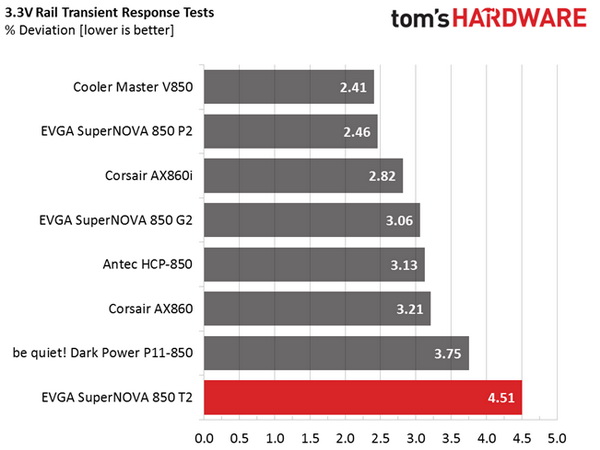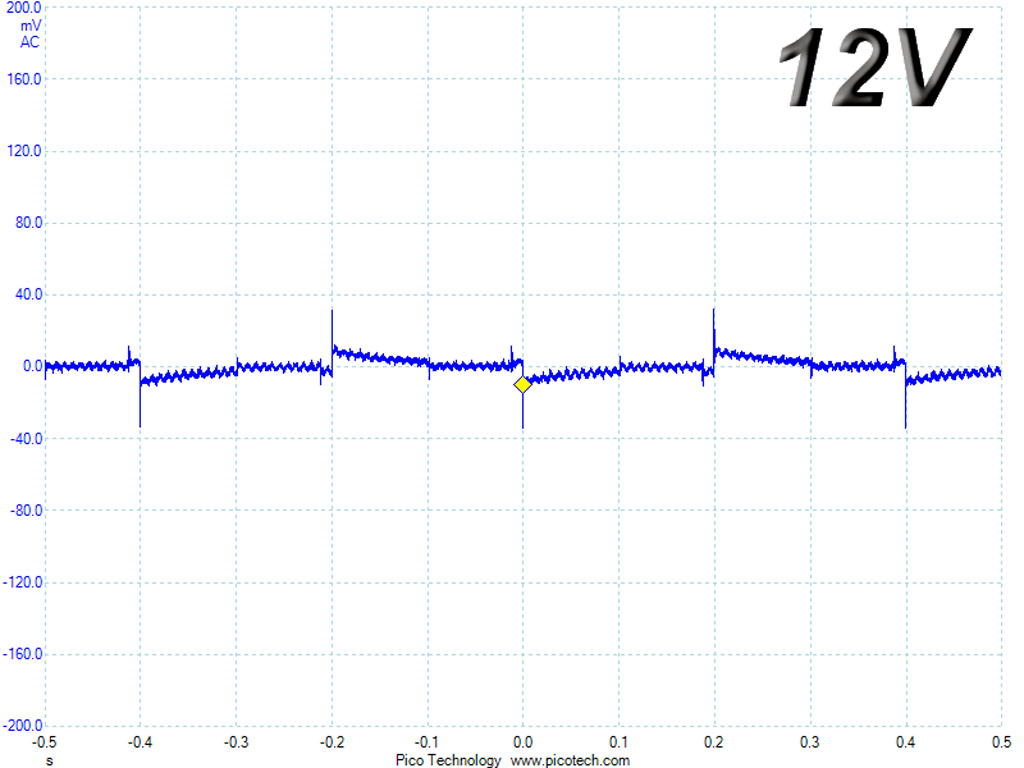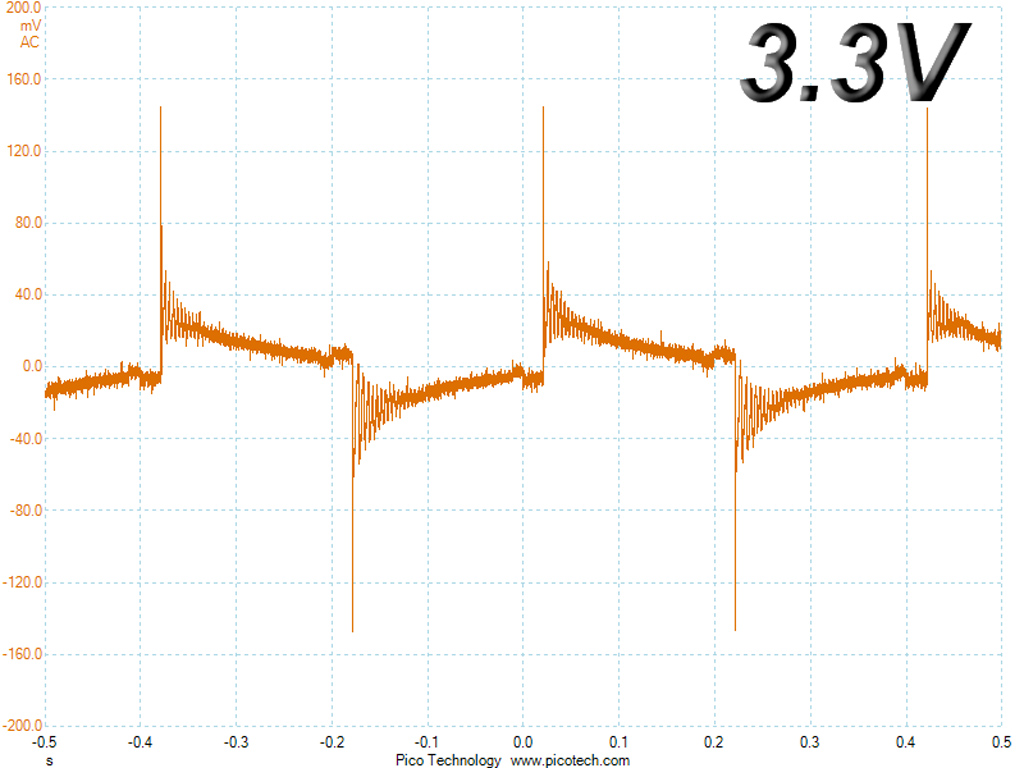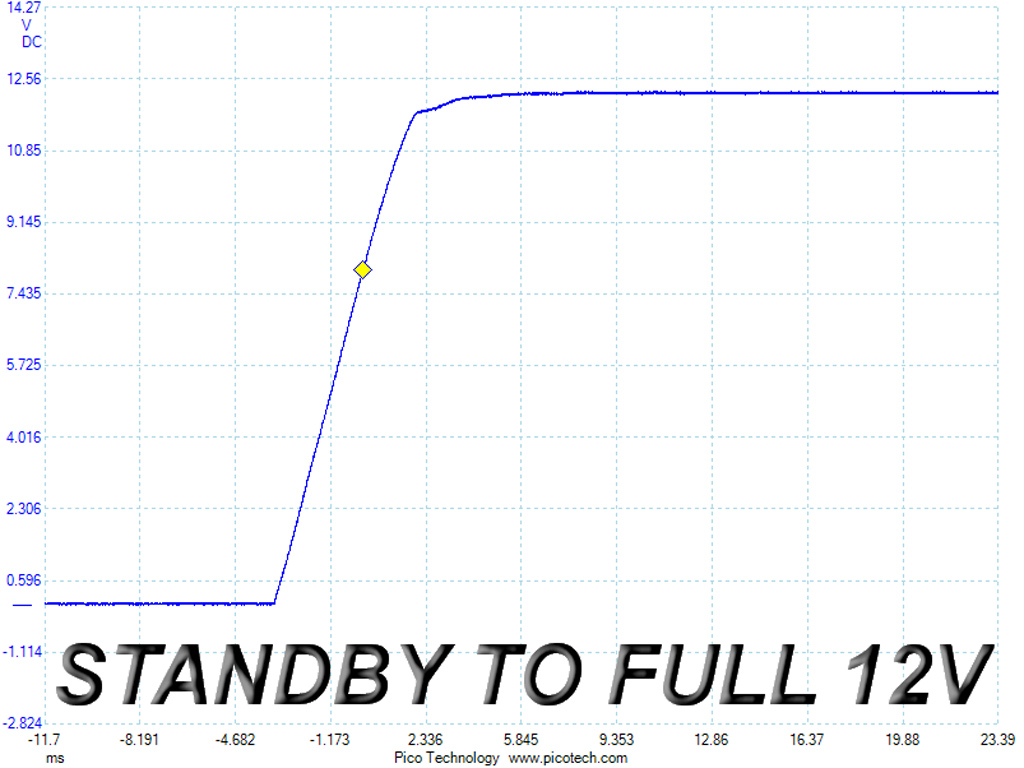EVGA SuperNOVA 850 T2 Power Supply Review
EVGA's T2 series consists of Titanium-rated PSUs with capacities ranging from 750 to 1600W. Today, we're looking at the 850W model, which tries to prove it is worth a premium compared to the company's Platinum-rated 850W offering.
Why you can trust Tom's Hardware
Transient Response Tests
Advanced Transient Response Tests
For details on our transient response testing, please click here.
In these tests, we monitor the response of the PSU in two different scenarios. First, a transient load (10A at +12V, 5A at 5V, 5A at 3.3V and 0.5A at 5VSB) is applied for 200ms while the PSU works at 20 percent load. In the second scenario, the PSU is hit by the same transient load while operating at 50 percent load. In both tests, we use our oscilloscope to measure the voltage drops caused by the transient load. The voltages should remain within the ATX specification's regulation limits.
These tests are crucial because they simulate the transient loads a PSU is likely to handle (such as booting a RAID array or an instant 100 percent load of CPU/GPUs). We call them "Advanced Transient Response Tests," and they are designed to be very tough to master, especially for PSUs with less than 500W capacity.
Advanced Transient Response at 20 Percent
| Voltage | Before | After | Change | Pass/Fail |
|---|---|---|---|---|
| 12V | 12.226V | 12.192V | 0.28% | Pass |
| 5V | 5.033V | 4.919V | 2.27% | Pass |
| 3.3V | 3.309V | 3.159V | 4.53% | Pass |
| 5VSB | 5.082V | 5.047V | 0.69% | Pass |
Advanced Transient Response at 50 Percent
| Voltage | Before | After | Change | Pass/Fail |
|---|---|---|---|---|
| 12V | 12.197V | 12.162V | 0.29% | Pass |
| 5V | 5.017V | 4.905V | 2.23% | Pass |
| 3.3V | 3.296V | 3.148V | 4.49% | Pass |
| 5VSB | 5.058V | 5.025V | 0.65% | Pass |





As we'd expect from a Leadex platform, deviations on the +12V rail are minimal. The same applies to the 5VSB rail. Unfortunately, the minor rails don't perform as well. The 3.3V rail registers the worst performance, with close to 4.5% deviations in both tests. Its voltage drops dangerously close to the ATX specification's lower limit during the second test.
Here are the oscilloscope screenshots we took during Advanced Transient Response Testing:
Transient Response At 20 Percent Load




Transient Response At 50 Percent Load




Turn-On Transient Tests
In the next set of tests, we measure the PSU's response in simpler transient load scenarios—during its power-on phase.
For the first measurement, we turn off the PSU, dial in the maximum current the 5VSB can output and switch on the PSU. In the second test, we dial the maximum load the +12V can handle and start the PSU while it's in standby mode. In the last test, while the PSU is completely switched off (we cut off the power or switch off the PSU by flipping its on/off switch), we dial the maximum load the +12V rail can handle before switching on the PSU from the loader and restoring power. The ATX specification states that recorded spikes on all rails should not exceed 10 percent of their nominal values (+10 percent for 12V is 13.2V, and 5.5V for 5V).
Get Tom's Hardware's best news and in-depth reviews, straight to your inbox.



The 5VSB rail registers a small spike that's way below the limit, while the +12V slope is perfect in both tests. Overall, we see very good performance here.
Current page: Transient Response Tests
Prev Page Cross-Load Tests And Infrared Images Next Page Ripple Measurements
Aris Mpitziopoulos is a contributing editor at Tom's Hardware, covering PSUs.
-
turkey3_scratch Very great unit, as expected. I would have liked to see the threshold for when OTP really kicks in, if it even does. Perhaps duct taping the exhaust grill will do the trick. It's nice to see Superflower use a MOV for a change. I just wish that 3.3V rail would not get so near 3.14V during the transient response tests, but realistically I don't expect the 3.3V rail to get that sudden load these days.Reply
Also @Aris, are you sure there's only 4 y caps? I thought those blue sleeves store multiple y caps? Or do they not? -
Aris_Mp if you mean the blue components before/after the bridge rectifier, they are X caps and I didn't count them in the EMI filter on purpose.Reply -
ZeusGamer I've had the G2 model of this power supply and it's still working great after two years. I'm really impressed by EVGA with these G2 and T2 models.Reply -
JackNaylorPE Efficiency is nice... I guess .... but with that 3.3 and 5V performance, I'm not impressed.Reply -
Dark Lord of Tech 3.3 rail can vary per unit , doesn't worry me a bit. Every test model for a review can produce different results.Reply -
JackNaylorPE To each his own I guess... but for the ridiculous price of $240, I'd want better. The Corsair 860 and coolermaster V850 PSUs finish 1 and 2 and are much cheaper.Reply
The unit would fail to meet the ATX spec at 5%, and this comes in at a rather dismal 4.5 %... yes, this does vary from unit to unit (and this is a bad thing) If the unit that winds up in the hands of a review site gets two outta 3 rails at 4.5%, I shudder to think what we might get ordering off newegg. In the review graphs, it's the bottom of the chart against all the other PSUs with which its compared.
The focus on efficiency in the ranking of PSUs in an enthusiast box is a criteria which escapes me ... I never walked into a Porsche dealership where the salesman's first pitch was "this model is great, it has the best gas mileage in our entire line'. -
yyk71200 Differences in effissiency between gold, platinum, and titanium psus are rather small and do not justify price differences. Quality of output is more important criteria in choosing a psu than small differences in wattage consumed.Reply